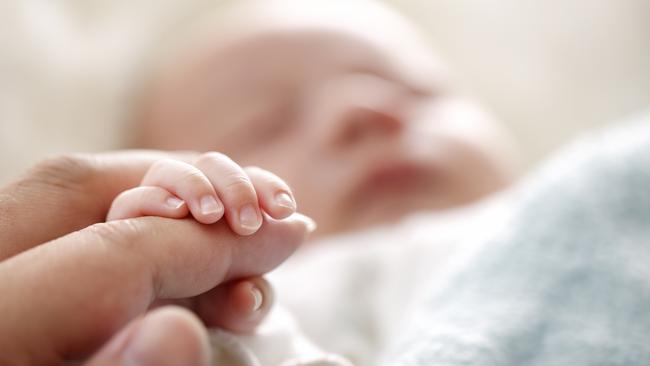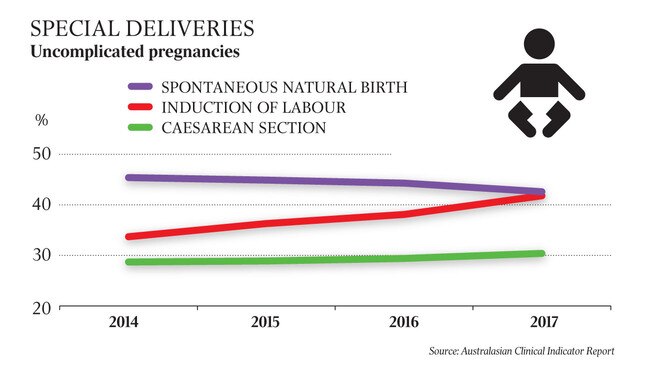Women baulk at natural births, opting for caesareans, inducement
The rate of caesarians, inductions and interventions is on the rise.

More births are being induced, and Australia’s already high rate of caesareans continues to rise, as expectant mothers worry about the risk of something going wrong.
While pregnant women are now more likely to be older or obese — factors that can increase the risk of complications — the trend towards medical intervention has drawn the attention of authorities.
According to the latest Australasian Clinical Indicator Report, which examines uncomplicated pregnancies, labour was induced in 41.8 per cent of first-time births last year. That rate is up 8 per cent in three years, and is more pronounced in the private sector.
In 2017, the caesarean rate increased to 30.4 per cent, the highest to date, and still more common in private hospitals. The use of medical instruments in vaginal births also increased to 26.9 per cent, which may reflect the type of pain relief used.
Michael Permezel from the Royal Australian and New Zealand College of Obstetricians and Gynaecologists said the decline in the proportion of spontaneous natural births was likely due to several factors.

Professor Permezel said patients were more likely to be older or obese, or had already had caesareans in previous births, and “women are becoming more risk-averse and therefore more often requesting obstetric procedures to minimise risk”.
He said there was an “increasing intolerance of foetal risk with approximately one in 400 pregnancies suffering mortality or serious morbidity beyond 39 weeks, which would likely have been averted in most cases had labour been induced or an elective caesarean performed”.
Interventions were more common in hospitals outside major cities, where there were also more likely to be complications. The increase in women going public to give birth, and the closure of regional birthing centres, has yet to be reflected in the trend data.
Experts warn that medical interventions must be clinically necessary as they carry an increased risk of babies being born with short-term issues such as jaundice and feeding problems, or long-term conditions such as diabetes, respiratory infections and eczema.
The report was compiled by the Australian Council on Healthcare Standards, whose president, Len Notaras, applauded the use of data to help identify trends and inform the debate over the appropriateness of care.
“There is no other comparable data set in the world,” Professor Notaras said.
Across 324 clinical indicators, there had been statistically significant positive trends in 81, including adverse blood transfusions in hospitals, long waits for radiation oncology and unplanned returns to surgery for day patients. However, standards deteriorated in several areas, including problems arising from gastrointestinal endoscopies — already under scrutiny for their clinical value — and the need for follow-up dental treatment.
The rate of mental health patients being physically restrained has also increased, despite the National Mental Health Commission urging reduction or elimination of such practices.



To join the conversation, please log in. Don't have an account? Register
Join the conversation, you are commenting as Logout